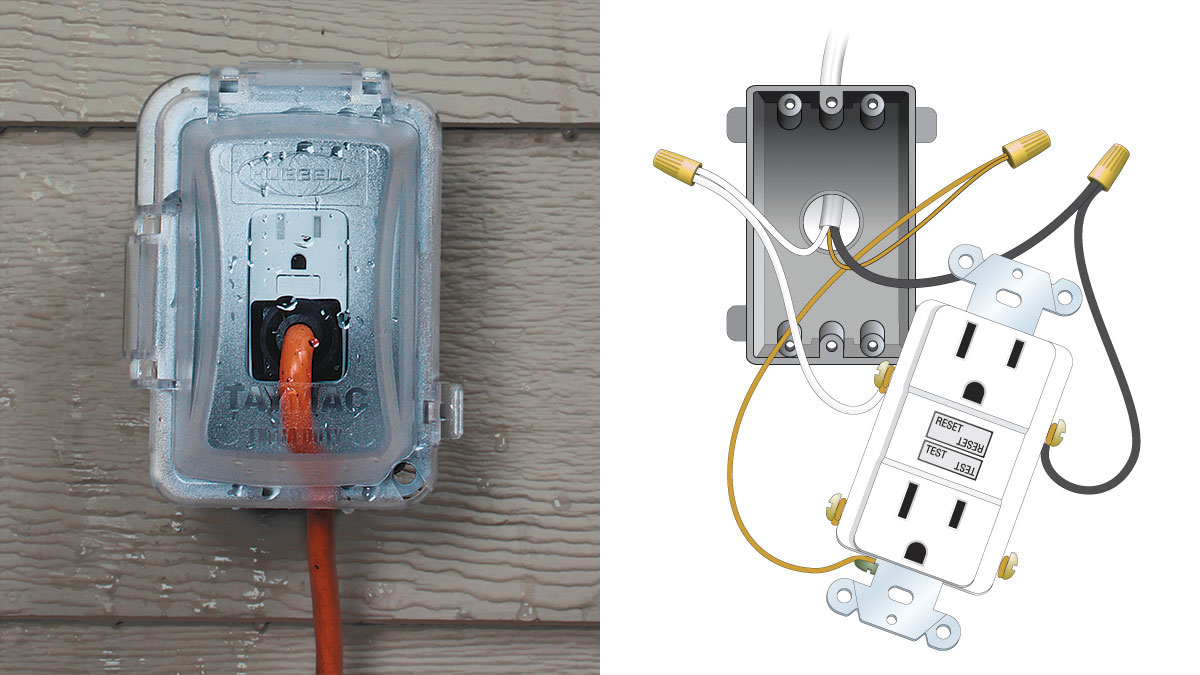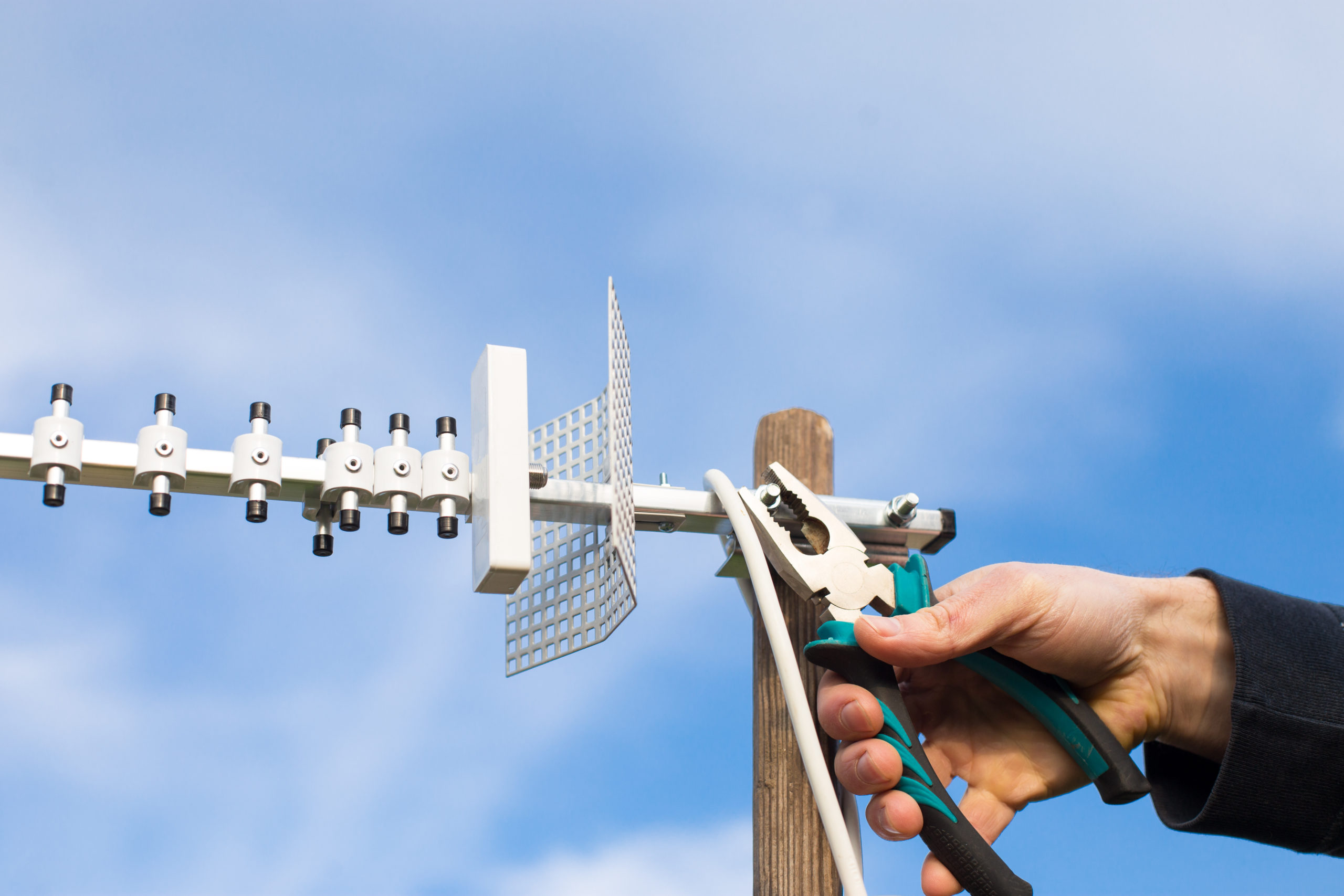Home>Furniture & Design>Outdoor Furniture>How High Should An Outdoor Outlet Be From The Ground


Outdoor Furniture
How High Should An Outdoor Outlet Be From The Ground
Modified: August 28, 2024
Find the ideal height for outdoor outlets from the ground to ensure safety and convenience for your outdoor furniture and design. Learn the best practices for installing outdoor electrical outlets.
(Many of the links in this article redirect to a specific reviewed product. Your purchase of these products through affiliate links helps to generate commission for Storables.com, at no extra cost. Learn more)
Introduction
When it comes to outdoor living spaces, having convenient access to electrical outlets is essential for powering lighting, appliances, and electronic devices. However, determining the ideal height for outdoor outlets is a crucial consideration to ensure both functionality and safety. In this comprehensive guide, we will explore the various factors that influence the placement of outdoor outlets, the standards set by the National Electrical Code (NEC), recommended heights for outdoor outlets, and special considerations for specific locations. By understanding these factors, homeowners and outdoor furniture and design enthusiasts can make informed decisions to optimize the utility and safety of their outdoor electrical outlets. Let's delve into the details and shed light on this important aspect of outdoor furniture and design.
Key Takeaways:
- Keep outdoor outlets 12-18 inches above ground for safety and protection from elements. Consider accessibility, aesthetics, and specific usage needs for a well-designed outdoor space.
- Tailor outlet placement to specific outdoor areas like kitchens, pools, and entertainment spaces. Prioritize safety, accessibility, and convenience for a harmonious outdoor environment.
Read more: How High Should Vanity Outlets Be
Factors to Consider
Several factors should be taken into account when determining the ideal height for outdoor electrical outlets. Understanding these factors is crucial for ensuring the convenience, functionality, and safety of the outdoor electrical system.
1. Accessibility: The height of outdoor outlets should prioritize accessibility, ensuring that they are easily reachable for plugging and unplugging various devices and appliances. Consider the typical usage scenarios and the placement of outdoor furniture and fixtures to determine the most accessible locations for the outlets.
2. Protection from Elements: Outdoor outlets must be positioned to prevent water, snow, and debris from entering the receptacles. Placing outlets at an appropriate height can help safeguard them from environmental elements, reducing the risk of electrical hazards and equipment damage.
3. Aesthetic Integration: The placement of outdoor outlets should also align with the overall aesthetic and design of the outdoor space. Integrating outlets seamlessly with the design elements, such as outdoor furniture, landscaping features, and architectural structures, can enhance the visual appeal of the space.
4. Safety Considerations: Ensuring the safety of occupants and users is paramount. The height of outdoor outlets should minimize the risk of accidental contact with electrical components, especially in areas frequented by children and pets.
5. Functional Requirements: Consider the specific electrical devices and appliances that will be used in the outdoor space. The height of the outlets should accommodate the practical needs, such as powering lighting fixtures, outdoor speakers, power tools, and other outdoor equipment.
By carefully considering these factors, homeowners and designers can make informed decisions regarding the placement and height of outdoor electrical outlets, optimizing both functionality and safety within the outdoor living environment.
National Electrical Code Standards
The National Electrical Code (NEC), published by the National Fire Protection Association (NFPA), sets the standard for electrical installation and safety in the United States. It provides guidelines and regulations for the proper placement and installation of electrical outlets, including those intended for outdoor use. Adhering to the NEC standards is crucial for ensuring compliance with electrical codes and promoting safe electrical practices.
Specifically, the NEC addresses the height requirements for outdoor electrical outlets to mitigate potential hazards and ensure optimal functionality. While the code does not mandate a specific height for outdoor outlets, it emphasizes the importance of installing outlets at a height that minimizes the risk of damage from environmental factors and promotes convenient access for users.
Compliance with NEC standards is not only essential for safety but also for legal and insurance purposes. Failure to adhere to the NEC guidelines can result in code violations and may compromise the safety and insurability of the property. Therefore, it is imperative to consult the NEC standards and work with qualified electricians to ensure that outdoor outlets are installed in accordance with the established codes and regulations.
By aligning with the NEC standards, homeowners and designers can have confidence in the safety and reliability of their outdoor electrical systems, fostering a secure and compliant outdoor living environment.
Outdoor outlets should be installed at a height of at least 12 inches above the ground to prevent water from entering and to keep them clear of snow and debris.
Recommended Heights for Outdoor Outlets
While the National Electrical Code (NEC) does not specify a precise height for outdoor outlets, there are recommended guidelines that can inform the placement of these essential electrical components. These recommendations are based on practical considerations and safety measures to ensure the effective and secure use of outdoor electrical outlets.
1. Elevation Above Grade: A commonly recommended practice is to install outdoor outlets at a height of approximately 12 to 18 inches above the ground level. This elevation helps protect the outlets from potential water exposure, especially in areas prone to flooding or irrigation. Additionally, it reduces the risk of debris accumulation and accidental damage from landscaping equipment.
2. Clearance from Obstructions: When determining the height of outdoor outlets, it is crucial to consider the clearance from nearby obstructions, such as outdoor furniture, planters, and architectural features. The outlets should be positioned at a height that allows unobstructed access for plugging and unplugging cords and connectors, ensuring convenient usage without interference.
3. Accessibility for Maintenance: In addition to considering the everyday usability of outdoor outlets, it is important to factor in accessibility for maintenance and inspection purposes. Installing outlets at a height that facilitates easy access for maintenance tasks, such as outlet replacement or wiring inspections, can contribute to the long-term functionality and safety of the electrical system.
4. Consideration for Ground-Fault Circuit Interrupters (GFCIs): Outdoor outlets, particularly those in proximity to wet or damp locations, should be equipped with Ground-Fault Circuit Interrupters (GFCIs) for enhanced shock protection. The height of these GFCI-protected outlets should align with the recommended elevation guidelines, ensuring effective protection against electrical hazards.
While these height recommendations provide valuable guidance, it is important to assess the specific environmental and usage factors of the outdoor space when determining the most suitable placement for outdoor outlets. By integrating these recommendations with practical considerations, homeowners and designers can optimize the functionality, safety, and aesthetic integration of outdoor electrical outlets within the outdoor living environment.
Special Considerations for Specific Locations
When planning the installation of outdoor electrical outlets, it is essential to account for the unique requirements and environmental conditions of specific outdoor locations. Different outdoor settings present distinct challenges and usage scenarios, necessitating tailored approaches to outlet placement and height considerations.
1. Outdoor Kitchen and Dining Areas: In outdoor kitchens and dining spaces, where electrical appliances and cooking equipment are utilized, the placement of outlets should prioritize accessibility and safety. Installing outlets at a height that accommodates countertop appliances and outdoor cooking devices while ensuring protection from moisture and spills is crucial for seamless and safe operation.
2. Pool and Spa Areas: Outdoor outlets near pool and spa areas must adhere to stringent safety measures to prevent electrical hazards in wet environments. The height of these outlets should align with recommended elevation guidelines and consider the installation of Ground-Fault Circuit Interrupters (GFCIs) to mitigate the risk of electrical shocks in proximity to water sources.
3. Entertainment and Seating Areas: For outdoor entertainment spaces, such as patios and seating areas, the placement of outlets should facilitate the use of lighting, audio systems, and electronic devices. Considering the layout of furniture and seating arrangements, outlets can be strategically positioned at heights that enable convenient access for powering entertainment components while complementing the overall design aesthetic.
4. Garden and Landscaped Areas: Outdoor outlets integrated into garden and landscaped areas should be positioned to accommodate the use of power tools, landscape lighting, and maintenance equipment. The height of these outlets should allow for easy connection of gardening tools and lighting fixtures while safeguarding them from soil moisture and potential damage from landscaping activities.
5. Pathways and Walkways: In outdoor pathways and walkways, the placement of outlets should consider pedestrian traffic and the need for occasional power access for maintenance or event-related lighting. Installing outlets at a height that minimizes obstruction and trip hazards while ensuring practical access for temporary power needs is essential for these areas.
By tailoring the placement and height of outdoor outlets to the specific demands of these locations, homeowners and designers can enhance the functionality, safety, and convenience of outdoor electrical access, contributing to a well-designed and harmonious outdoor living environment.
Read more: How High Are the Outlets From The Floor
Conclusion
Optimizing the height of outdoor electrical outlets is a critical aspect of creating a safe, functional, and aesthetically pleasing outdoor living space. By considering various factors such as accessibility, protection from environmental elements, and specific usage requirements, homeowners and designers can strategically determine the ideal placement and height for outdoor outlets.
While the National Electrical Code (NEC) does not prescribe a specific height for outdoor outlets, it provides essential guidelines to ensure compliance with electrical safety standards. Adhering to NEC standards and consulting with qualified electricians are vital steps in ensuring the proper installation and placement of outdoor electrical outlets.
Recommended height guidelines, such as elevating outlets 12 to 18 inches above ground level, considering clearance from obstructions, and accommodating maintenance accessibility, offer valuable insights for positioning outdoor outlets effectively. These recommendations, when integrated with special considerations for specific outdoor locations, such as entertainment areas, pool and spa spaces, and outdoor kitchens, contribute to a tailored and optimized approach to outdoor outlet placement.
Ultimately, the strategic placement and height of outdoor outlets contribute to the seamless integration of electrical access within the outdoor environment, supporting the use of outdoor appliances, lighting, and entertainment systems while prioritizing safety and visual harmony. By aligning with best practices and considering the unique requirements of specific outdoor settings, homeowners and designers can create outdoor spaces that are both functional and inviting, enhancing the overall outdoor furniture and design experience.
Embracing these considerations and guidelines empowers individuals to make informed decisions regarding the placement and height of outdoor electrical outlets, fostering a well-designed, safe, and enjoyable outdoor living environment for years to come.
Eager to tackle new challenges and personalize your living space? Dive into our article on DIY projects. You'll find why taking on these personal projects not only transforms your home but also brings a sense of accomplishment and creativity that store-bought solutions can't match. Whether you're crafting a unique piece of furniture or revamping your garden, the rewards of DIY are endless. Isn't it time you discovered how rewarding it can be to create something with your own hands?
Frequently Asked Questions about How High Should An Outdoor Outlet Be From The Ground
Was this page helpful?
At Storables.com, we guarantee accurate and reliable information. Our content, validated by Expert Board Contributors, is crafted following stringent Editorial Policies. We're committed to providing you with well-researched, expert-backed insights for all your informational needs.















0 thoughts on “How High Should An Outdoor Outlet Be From The Ground”